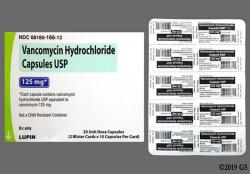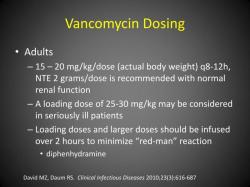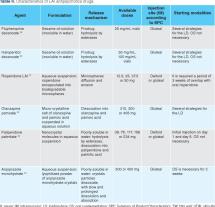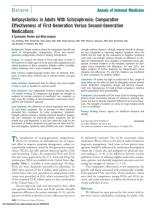How to calculate vancomycin dose?
Calculating a vancomycin dose involves considering factors such as the patient's weight, renal function, desired serum concentration, and dosing interval. The dosing of vancomycin is often based on the patient's body weight and kidney function. It's crucial to note that vancomycin is typically administered intravenously, and dosing may vary based on specific patient factors.
Here's a general guideline for calculating a vancomycin dose:
Determine the Patient's Weight:
- Know the patient's weight in kilograms (kg), as vancomycin dosing is often expressed in milligrams per kilogram (mg/kg).
Calculate the Loading Dose (if applicable):
- For some situations, a loading dose may be given to achieve therapeutic levels quickly. The loading dose formula is as follows:
Calculate Maintenance Dose:
The maintenance dose is based on the patient's weight and renal function. The formula is:
Vancomycin clearance can be estimated using the Cockcroft-Gault equation for creatinine clearance:
Adjust the estimated creatinine clearance based on the patient's renal function:
- For normal renal function: No adjustment needed.
- For mild renal impairment: Multiply estimated creatinine clearance by 0.75.
- For moderate renal impairment: Multiply estimated creatinine clearance by 0.65.
- For severe renal impairment: Multiply estimated creatinine clearance by 0.5.
Adjust for Actual Body Weight or Ideal Body Weight:
- Depending on the clinical situation, vancomycin dosing may be based on the patient's actual body weight or ideal body weight. Adjust the dose accordingly.
Consider Monitoring:
- Vancomycin levels should be monitored regularly to ensure therapeutic levels and prevent toxicity. The target peak concentration is often in the range of 15-20 mg/L, and the trough concentration should be below 10 mg/L to minimize the risk of nephrotoxicity.
Always follow the specific dosing guidelines provided by the healthcare provider, hospital, or institution. The dosing of vancomycin may vary based on the patient's clinical condition, the presence of infections, and local guidelines. Additionally, vancomycin dosing in pediatric patients may follow different considerations. It's crucial to consult with a healthcare professional for accurate and individualized dosing recommendations.
What considerations are involved in calculating the appropriate dosage of vancomycin for a patient?
Calculating the appropriate dosage of vancomycin for a patient requires careful consideration of several factors:
1. Patient characteristics:
- Age: Doses are adjusted based on age, particularly for pediatric patients.
- Weight: Vancomycin is typically dosed based on the patient's weight.
- Renal function: Dosage adjustments are necessary for patients with impaired kidney function, as vancomycin is primarily eliminated through the kidneys.
- Underlying medical conditions: Certain medical conditions may affect how vancomycin is metabolized or eliminated, necessitating dosage adjustments.
2. Infection severity:
- Type of infection: Different types of infections require different dosages of vancomycin depending on the severity and the susceptibility of the bacteria.
- Site of infection: The location of the infection can also influence the dosage, as some sites require higher concentrations of the drug to reach the target bacteria.
3. Desired therapeutic goals:
- Peak and trough levels: Monitoring vancomycin peak and trough levels helps ensure the drug reaches effective concentrations while avoiding toxicity.
- Target AUC/MIC ratio: The AUC/MIC ratio represents the total drug exposure over time compared to the minimum inhibitory concentration of the drug for the specific bacteria causing the infection. Optimizing this ratio maximizes efficacy and minimizes resistance.
4. Potential drug interactions:
- Concurrent medications: Certain medications can interact with vancomycin, potentially affecting its efficacy or safety.
- Dosage adjustments might be necessary to prevent adverse interactions.
5. Administration route:
- Intravenous (IV): The most common route for administering vancomycin, allowing for precise dosing and rapid delivery.
- Oral: Used in some cases, but bioavailability is lower compared to IV administration.
- Dosage adjustments are necessary depending on the chosen route of administration.
Additional factors:
- Pregnancy and breastfeeding: Vancomycin can cross the placenta and into breast milk. Careful consideration and monitoring are needed for pregnant or breastfeeding patients.
- History of allergies or adverse reactions: Patients with a history of allergies to vancomycin or similar medications require alternative options.
It's crucial to remember that calculating vancomycin dosage requires the expertise of a healthcare professional. This ensures the safety and efficacy of the treatment for each individual patient. Pharmacists and physicians typically collaborate to determine the appropriate dosage based on the factors mentioned above.
Here are some additional resources for calculating vancomycin dosage:
- Antimicrobial Therapy and Pharmacology by Donald Kaye and Thomas M. File Jr.
- Vancomycin Dosing Calculator by Antimicrobial Companion: https://antimicrobialcompanion.scot/nhs-grampian-orkney-shetland/vancomycin-dosage-calculator/
- SHC Vancomycin Dosing Guide by Stanford University: https://med.stanford.edu/content/dam/sm/bugsanddrugs/documents/antimicrobial-dosing-protocols/SHC-Vancomycin-Pharmacy-Protocol.pdf
Always consult with a healthcare professional for personalized advice and guidance regarding vancomycin dosage and any concerns you may have.













